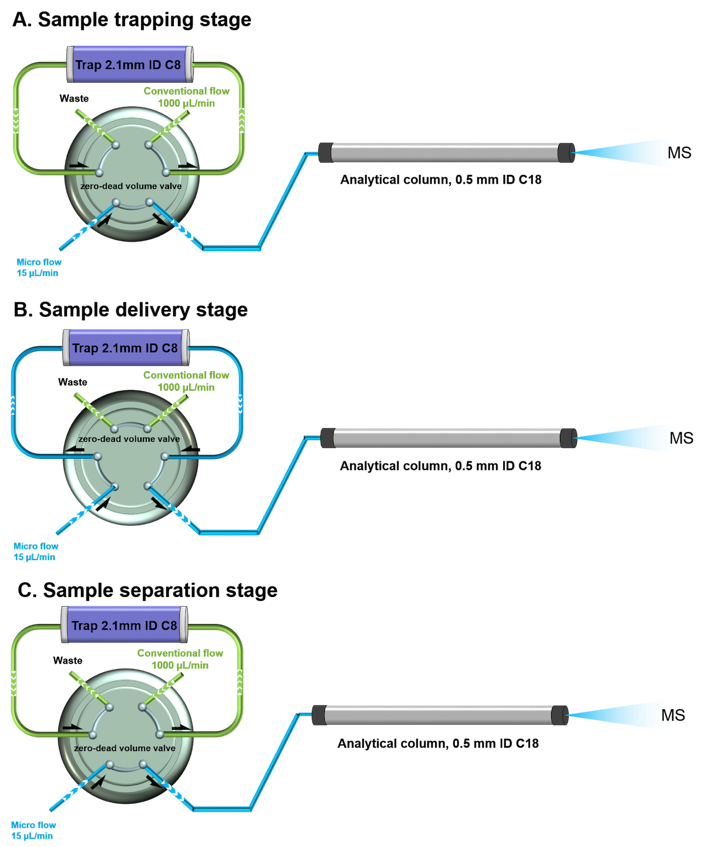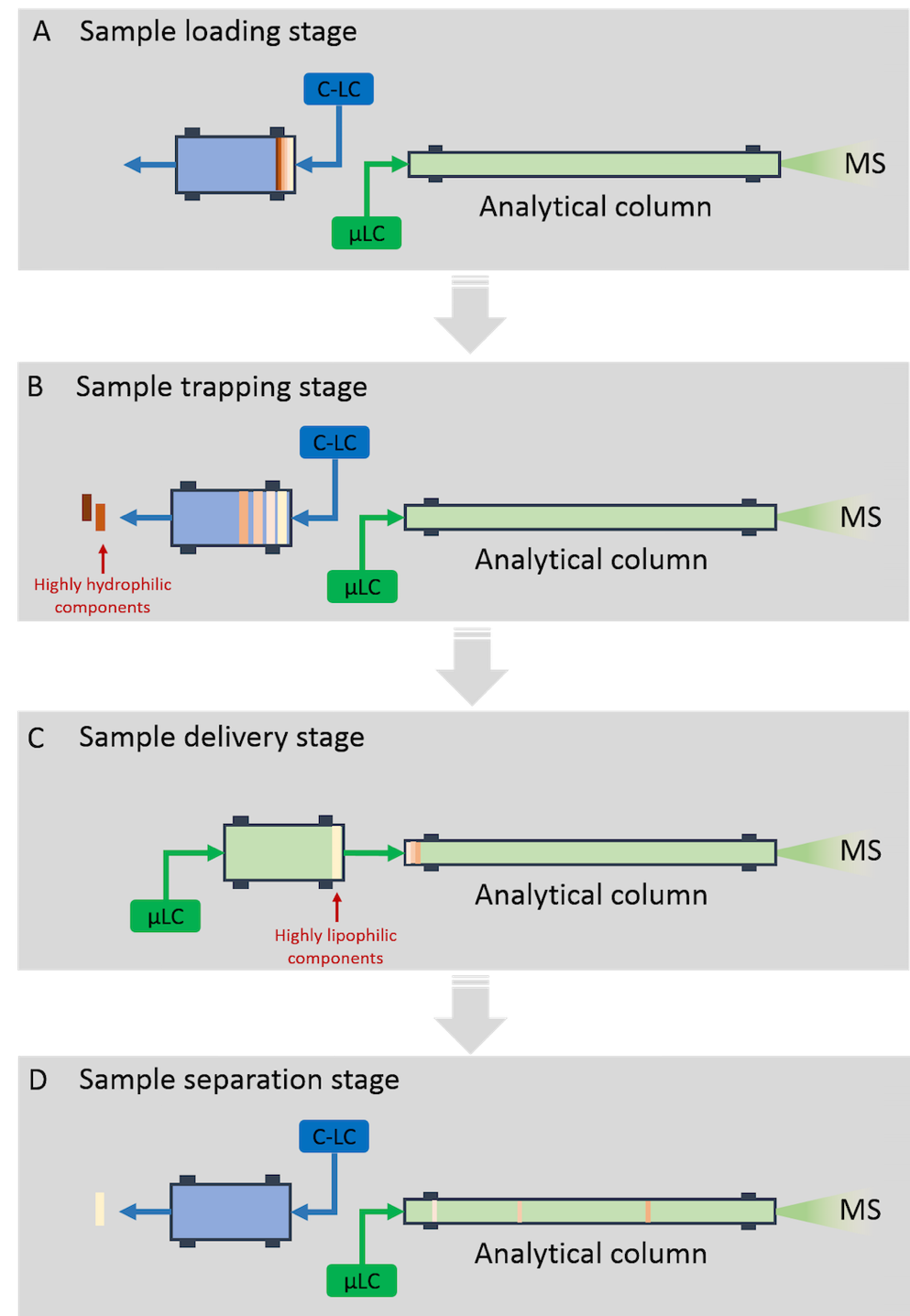 |


Trapping-micro LC-MS
A novel Trapping-micro-LC-MS (T-µLC-MS) strategy for targeted protein bioanalysis, achieving high sensitivity with exceptional robustness and high throughput. A rapid, high-capacity trapping of biological samples is followed by a µLC-MS analysis; dynamic sample trapping/clean-up were performed using pH, column chemistry and fluid mechanics different from µLC-MS analysis, enabling orthogonality contributing to the reduction of chemical noise, thus improved sensitivity. Typically, the selective trapping/delivery approach strategically removed >85% matrix peptides and detrimental components, markedly enhancing sensitivity, throughput, and operational robustness. A significant sensitivity gain(up to 25-fold) compared to conventional LC-MS was achieved while average run time was only 8 min/sample. No appreciable peak deterioration or loss of sensitivity was observed after >1500 injections of tissue/plasma samples.

Basic instrumental setup of Tµ-LC/MS system. A C8 trap cartridge (15´2.1 mm) and C18 capillary analytical column (150´0.5 mm) were connected/isolated by a 6-port valve. Workflow of analysis cycle is shown in the figure step by step: A. After injection, sample is trapped in the C8 cartridge to removal hydrophilic matrix components by c-LC system while the analytical column is equilibrated in isolation by µ-LC system; B. Post cleaning, sample is delivered to analytical column driven by µ-LC system reversely; C. Following completion of specific delivery, the trap cartridge will be disconnected from µ-LC system to be cleaned and re-equilibrated with c-LC system, while the gradient elution on capillary column is continuing.

Extensive simplification of sample during each step of analysis cycle. A: Sample is loaded onto the trap cartridge with an aqueous-phase dominant solvent; B: Highly hydrophilic components for the sample is removed during the sample trapping stage, while the retention volume is maintained minimum by optimal LC condition; C: Target is specifically delivered to analytical column, whereas the highly lipophilic components is kept away; D: Analytical column will separate the target from remained matrix components for MS analysis.
References:
1. Zhang M, An B, Qu Y, Shen S, Fu W, Chen YJ, Wang X, Young R, Canty JM Jr., Balthasar JR, Murphy K, Bhattacharyya D, Josephs J, Ferrari L, Zhou S, Bansal S, Vazvaei F*, Qu J*. Sensitive, High-Throughput, and Robust Trapping-Micro-LC-MS Strategy for the Quantification of Biomarkers and Antibody Biotherapeutics. Anal Chem. 90(3):1870-1880. (2018)


